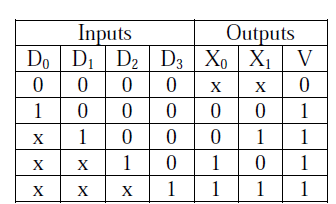GATE CS 2013
Question 1
A binary operation [Tex]\\oplus[/Tex] on a set of integers is defined as x [Tex]\\oplus[/Tex] y = x2 + y2. Which one of the following statements is TRUE about [Tex]\\oplus[/Tex]?
Question 2
The smallest integer that can be represented by an 8-bit number in 2’s complement form is
Question 3
Question 4
Which one of the following is the tightest upper bound that represents the number of swaps required to sort n numbers using selection sort?
Question 5
Which one of the following is the tightest upper bound that represents the time complexity of inserting an object into a binary search tree of n nodes?
Question 6
Consider the languages L1 = [Tex]\\phi [/Tex]and L2 = {a}. Which one of the following represents L1 L2* U L1*
Question 7
What is the maximum number of reduce moves that can be taken by a bottom-up parser for a grammar with no epsilon- and unit-production (i.e., of type A -> є and A -> a) to parse a string with n tokens?
Question 8
A scheduling algorithm assigns priority proportional to the waiting time of a process. Every process starts with priority zero (the lowest priority). The scheduler re-evaluates the process priorities every T time units and decides the next process to schedule. Which one of the following is TRUE if the processes have no I/O operations and all arrive at time zero?
Question 9
Match the problem domains in GROUP I with the solution technologies in GROUP II
GROUP I GROUP II (P) Service oriented computing (1) Interoperability (Q) Heterogeneous communicating systems (2) BPMN (R) Information representation (3) Publish-find-bind (S) Process description (4) XML
Question 10
Three concurrent processes X, Y, and Z execute three different code segments that access and update certain shared variables. Process X executes the P operation (i.e., wait) on semaphores a, b and c; process Y executes the P operation on semaphores b, c and d; process Z executes the P operation on semaphores c, d, and a before entering the respective code segments. After completing the execution of its code segment, each process invokes the V operation (i.e., signal) on its three semaphores. All semaphores are binary semaphores initialized to one. Which one of the following represents a deadlock-free order of invoking the P operations by the processes?
There are 58 questions to complete.
Last Updated :
Take a part in the ongoing discussion
